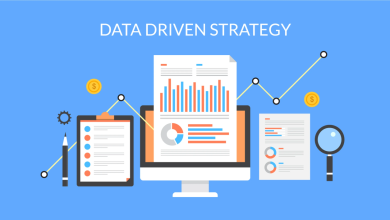
The UK and US are experiencing a productivity crisis. In 2023, UK productivity was approximately 19% lower than that of the US. Naturally, governments and employers are searching for solutions, and AI is often seen as the answer to bridge that gap. While AI can undoubtedly speed up some tasks in isolation, expecting it to work magic when plugged into a service is misguided. Before you introduce AI, it’s essential to explore orchestration, and in this article I’ll explain why.
Fix your operational black holes
One of the biggest challenges businesses face is a lack of visibility into their own operations. If you don’t understand how work flows through your organisation, how can you improve it? More importantly, how can you apply AI in a meaningful way?
This scenario is common among the service leaders who approach me. They’ve attempted to implement automation, expecting efficiency gains, only to find that work still gets stuck, errors persist, and teams remain bogged down in firefighting and manual work. This is because the root problem of unstructured and inefficient processes was never addressed. Without visibility, AI is just a fancy widget. AI needs a clear framework to function effectively, which is exactly what orchestration provides.
Orchestration in a nutshell
Think of orchestration as the glue that binds your people, processes, systems, and automation efforts together. It’s a single platform to run all your service lines through, so you’re never left in the dark about visibility again as you can see and manage everything in one place. You can even access operational metrics in real time, gaining granular information about how a team in Berlin performs compared to, say, Bristol. This allows you to identify gaps, broken processes, areas needing more resources, and where you can scale back. This kind of information is essential before introducing automation; otherwise, it’s a shot in the dark. A broken process with AI is still a broken process.
Orchestration can help you answer the following questions..
- How much work is my team doing on a daily or weekly basis?
- Are my teams stuck doing repetitive manual tasks that could be automated?
- Do we have visibility across end-to-end operations?
- How much manual work and firefighting are we engaged in?
Now, you could say I’m slightly biased since I literally run a process orchestration company called Enate. Orchestration is my bread and butter; it’s what I spend my days rolling out, and I fully believe in it. So don’t just take my word for it, see what TMF, EY, and CMS have to say about introducing process orchestration.
Know your use case
In terms of progress, I suggest gaining control of your processes first, using the data you have to optimise and improve, and then start automating based on that orchestration data. Otherwise, you risk automating what your noisiest colleague wants, rather than something that will bring material value.
Consider your own business. Workflows run across multiple teams, systems, and tools. Some processes run smoothly, while others are chaotic, full of bottlenecks and inefficiencies. Introducing AI into that environment only amplifies the chaos. Bad processes don’t become good just because AI is involved; they just move faster in the wrong direction.
AI is best at automating repetitive tasks, extracting insights from data, and making predictions. But it needs structure. If processes are fragmented, AI won’t know where to apply itself effectively. That’s where orchestration comes in. Orchestration provides the backbone for AI to function properly, ensuring work is co-ordinated, data flows smoothly, and automation occurs in the right place at the right time.
The exception to the rule
Although I believe anyone running a sophisticated service should orchestrate before automating, some roles and departments can safely adopt AI right away. If your job involves creating, whether as a Graphic Designer, Coder, or Copywriter then using generative AI is a low-risk move. Even in our own organisation, our Content Team leverages AI for proofreading, and our Coders use AI to draft initial versions of code. These teams already have structured workflows with built-in testing, quality control, and approvals, making AI a no-brainer for speeding up repetitive tasks. It’s like having your own (affordable) personal assistant.
The way I’d recommend approaching generative AI within these roles is:
- Identify everyone in the organization whose job involves creating (writing, designing, and building).
- Create task forces for each skill and let them find the best AI co-pilot for their tasks, such as Midjourney for Graphic Designers or ChatGPT for Copywriters.
- Test and procure low-risk tools that boost efficiency without compromising quality.
However, if you’re running a large service, you’re dealing with a different level of risk and that’s where orchestration becomes essential. It ensures AI and human teams work together effortlessly while maintaining full control over customer interactions.
Final thoughts
AI has huge potential, but without orchestration, AI has no solid foundation. If you don’t have control over your processes, AI won’t help. By getting your operations in order first, you set AI up for success, allowing it to deliver real, tangible results rather than just adding to the noise.




